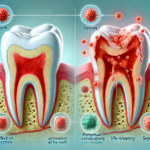How to Get Rid of Earwigs: A Step-by-Step Guide
Earwigs are small, nocturnal insects that are often found in damp and dark environments, such as under mulch, in flower beds, or even inside your home. While they may look intimidating with their pincers, they are mostly harmless to humans. However, if you’re dealing with an infestation, you’ll want to know how to get rid of earwigs effectively. This guide provides several methods to remove earwigs and prevent them from returning.
Table of Contents
Why Are Earwigs in Your Home or Garden?
Earwigs are attracted to moist, dark areas where they can hide during the day. You may notice them in:
- Gardens: Earwigs thrive in damp areas with mulch, leaf piles, or under garden debris.
- Homes: They may enter your home in search of shelter, especially in basements, bathrooms, or kitchens where moisture is present.
- Nighttime Activity: Earwigs are nocturnal and typically come out at night to feed on decaying organic matter, plants, or small insects.

How to Get Rid of Earwigs: Step-by-Step Methods
Here’s a comprehensive guide to eliminating earwigs from your home and garden.
Method 1: Remove Moisture and Reduce Humidity
Earwigs are attracted to moist areas, so reducing the amount of moisture in and around your home can help deter them.
Step-by-Step Instructions:
- Fix Leaky Pipes and Faucets:
- Repair any leaks in your plumbing, especially in bathrooms, kitchens, and basements, to remove potential water sources for earwigs.
- Ventilate Damp Areas:
- Use dehumidifiers or fans to dry out damp areas, such as basements, crawl spaces, and bathrooms.
- Avoid Overwatering Plants:
- In gardens, avoid overwatering plants and ensure proper drainage to reduce moist conditions where earwigs thrive.
- Clear Gutters and Downspouts:
- Make sure gutters and downspouts are clear of debris and direct water away from your home’s foundation.
When to Use This Method:
- Ideal for preventing earwigs from entering your home and reducing their habitat in gardens.
Method 2: Eliminate Hiding Spots
Earwigs love to hide in dark, damp places during the day. Removing these hiding spots is a simple way to discourage them from settling in your yard or home.
Step-by-Step Instructions:
- Clear Garden Debris:
- Remove piles of leaves, grass clippings, and other organic matter that earwigs might use as hiding spots in your garden.
- Move Mulch Away from the House:
- If you use mulch in your garden beds, make sure it’s kept at least 6–12 inches away from your home’s foundation to prevent earwigs from entering.
- Declutter Indoors:
- Clear clutter, particularly in basements, garages, and storage areas, where earwigs might hide.
- Seal Cracks and Gaps:
- Inspect your home for small cracks and gaps around doors, windows, and the foundation. Seal these entry points with caulk or weather stripping to prevent earwigs from entering.
When to Use This Method:
- Best for reducing potential habitats for earwigs both indoors and outdoors.
Method 3: Use Natural Earwig Traps
Traps can be an effective way to catch and kill earwigs without using harmful chemicals.
DIY Earwig Trap:
- Create a Damp Newspaper Trap:
- Roll up a damp newspaper and secure it with a rubber band. Place it in the garden or inside your home where you’ve noticed earwigs. The moisture will attract them, and they’ll crawl inside the paper.
- Check the Trap in the Morning:
- In the morning, collect the newspaper and dispose of it or shake out the earwigs into soapy water to kill them.
Oil and Soy Sauce Trap:
- Fill a Small Container with Oil and Soy Sauce:
- Use a shallow container like a tuna can and fill it with equal parts soy sauce and vegetable oil. Place the container in areas where you’ve noticed earwigs. The scent attracts them, and the oil traps them.
- Check and Refill the Trap:
- Check the trap daily, dispose of the captured earwigs, and refill the container as needed.
When to Use This Method:
- Great for targeting earwigs in specific areas like gardens, kitchens, or basements without using pesticides.
Method 4: Use Insecticides for Severe Infestations
If you’re dealing with a larger earwig infestation, using insecticides may be necessary to control the problem.
Step-by-Step Instructions:
- Select an Insecticide for Earwigs:
- Choose an insecticide labeled for use against earwigs. Look for products containing pyrethrins or diatomaceous earth for effective control.
- Apply Insecticide Outdoors:
- Spray the insecticide around the perimeter of your home, especially near doors, windows, and the foundation where earwigs may enter.
- Apply Insecticide Indoors (if necessary):
- For indoor infestations, use the insecticide in areas where earwigs are active, such as basements, kitchens, or bathrooms. Follow the manufacturer’s instructions for safe use.
- Reapply as Needed:
- Depending on the product, you may need to reapply the insecticide after rain or every few weeks to maintain effectiveness.
When to Use This Method:
- Best for severe earwig infestations where natural methods or traps are not sufficient.
Method 5: Encourage Natural Predators
Introducing natural predators into your garden is a non-toxic way to control earwig populations.
Step-by-Step Instructions:
- Attract Birds:
- Birds, such as wrens and robins, feed on earwigs. Install bird feeders or nesting boxes in your yard to attract birds.
- Introduce Beneficial Insects:
- Predatory insects like ground beetles and tachinid flies are natural enemies of earwigs. You can purchase beneficial insects from garden stores or encourage them by planting native flowers and plants.
- Encourage Toads and Frogs:
- Create a habitat that attracts toads and frogs by placing small water sources, rocks, or logs in your garden. These amphibians will help keep the earwig population under control.
When to Use This Method:
- Best for long-term, eco-friendly control of earwigs in gardens and outdoor areas.
How to Prevent Earwigs from Returning
Once you’ve eliminated earwigs, follow these tips to keep them from coming back:
- Keep the House Dry:
- Use dehumidifiers and fans to keep areas like basements and bathrooms dry. Fix any leaks promptly.
- Seal Entry Points:
- Regularly inspect and seal any new cracks, gaps, or openings around your home’s foundation, windows, and doors.
- Maintain Outdoor Areas:
- Keep your garden tidy by removing excess mulch, fallen leaves, and other organic debris that can attract earwigs.
- Use Outdoor Lighting Carefully:
- Earwigs are attracted to outdoor lights. Try using yellow or sodium vapor lights, which are less attractive to insects, near doors and windows.
Common Questions About Earwigs
1. Do earwigs bite humans?
- Earwigs may use their pincers if threatened, but they don’t bite or harm humans. Their pincers are mostly used for defense and hunting other small insects.
2. What attracts earwigs to your home?
- Moisture, dampness, and dark hiding spots are the primary attractants. They may also enter homes in search of food or shelter during extreme weather conditions.
3. Are earwigs harmful to plants?
- Earwigs can sometimes damage young plants or flowers, but they generally feed on decaying matter and smaller pests, so they are not always harmful to gardens.
4. Do earwigs infest homes?
- Earwigs can enter homes, but they typically don’t form large infestations indoors. They’re more common in damp outdoor areas like gardens, under mulch, and in decaying wood.
How to Get Rid of Earwigs: Quick Reference Table
| Method | Steps | Best For |
|---|---|---|
| Remove Moisture | Fix leaks, use dehumidifiers, and clear gutters | Reducing earwig habitats in homes and gardens |
| Eliminate Hiding Spots | Remove garden debris, mulch, and seal entry points | Preventing earwigs from entering or hiding around your home |
| Use Natural Traps | Set up newspaper or oil traps to catch earwigs | Trapping earwigs in targeted areas |
| Apply Insecticide | Use pyrethrin-based or diatomaceous earth insecticides around your home | Handling severe infestations indoors or outdoors |
| Encourage Natural Predators | Attract birds, beneficial insects, toads, or frogs | Long-term, eco-friendly control in gardens |
Conclusion
Knowing how to get rid of earwigs effectively requires a combination of prevention, natural methods, and, when necessary, insecticides.









